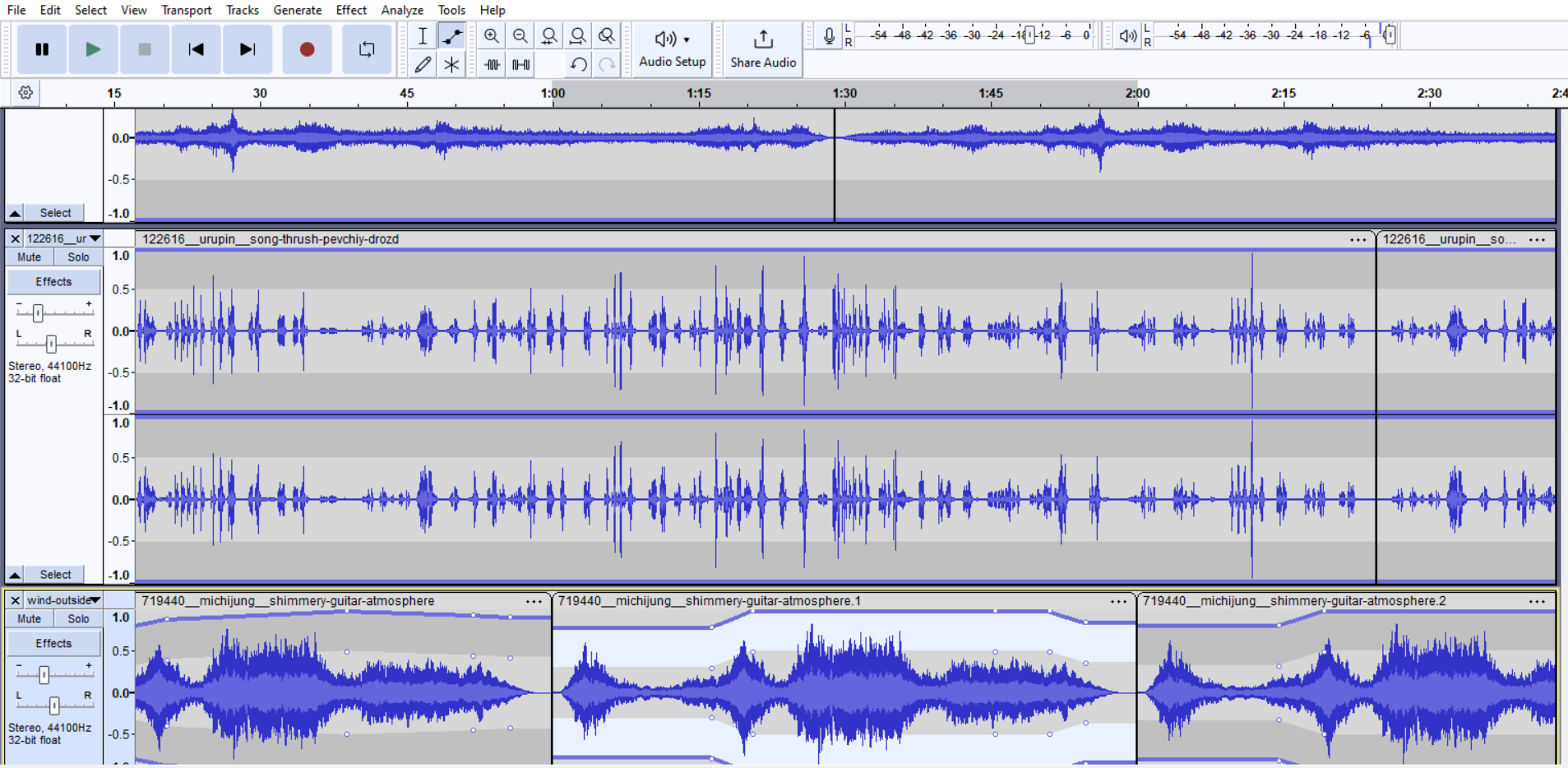
Skills: Level Design / Sound Design / Unreal Engine / Audacity
The Inbetween follows the story of a comic book writer in hospital. The game (made for a one week game jam) explores a world divided in two — one the mundaneness of reality and the other, a world of fantasy and childish exploration. Inspired by the character from the Life is Strange franchise, Chris Eriksen in Dontnod’s demo adventure game The Awesome Adventures of Captain Spirit, the game delves into the comic book writer’s journey as she relives fragmented childhood memories to overcome a creative block induced by the weight of her illness. Through this dual-world narrative, The Inbetween explores themes of escapism, creativity, and the power of imagination to heal and inspire.
As the level designer for The Inbetween, I worked closely with my teammates, developing and sharing my concepts for the game’s environment (a hospital) and level gameplay. Having recently explored the concept of non-Euclidean level design for another team project (linked below), I was eager to explore this design through this game jam.
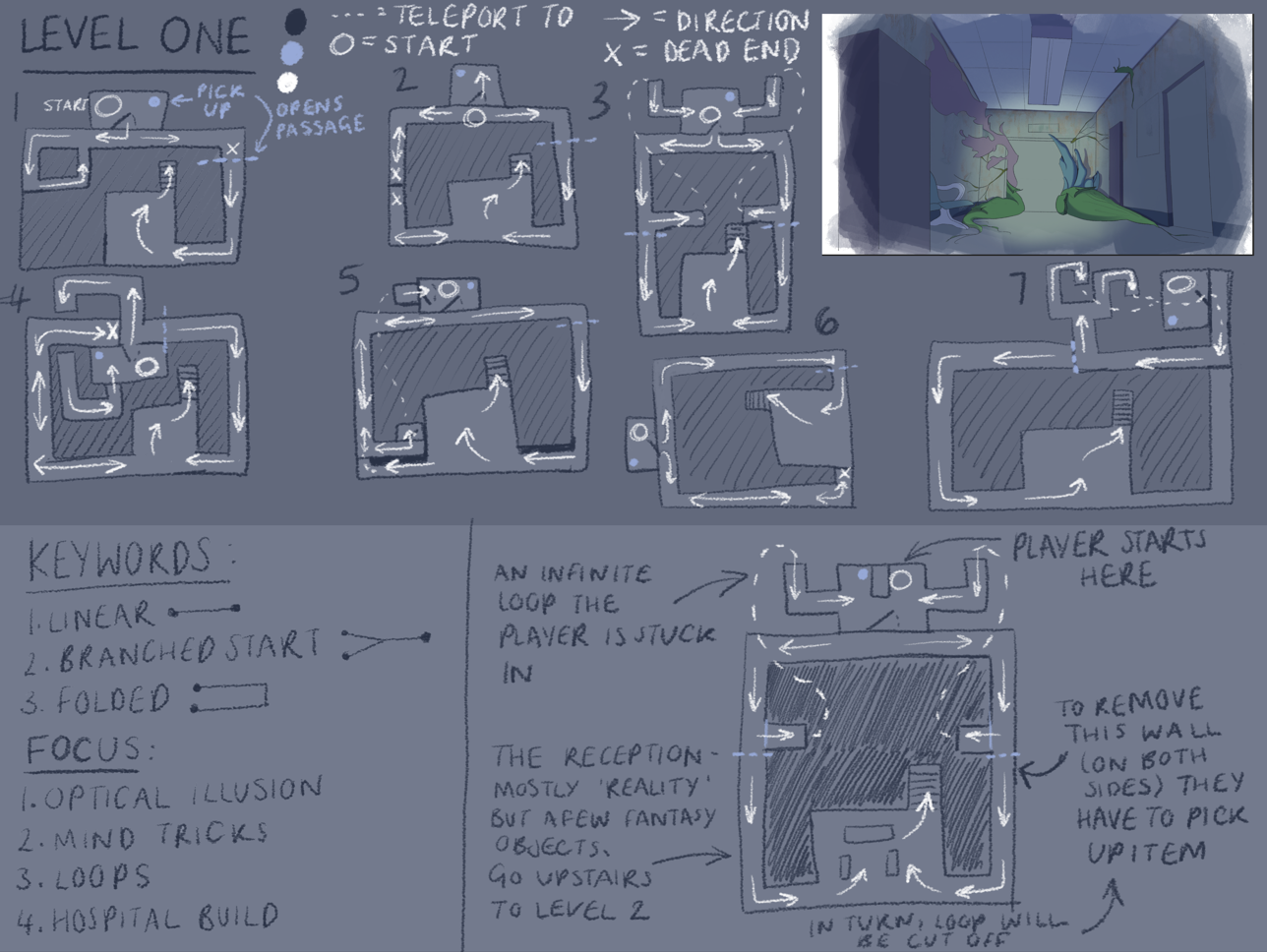
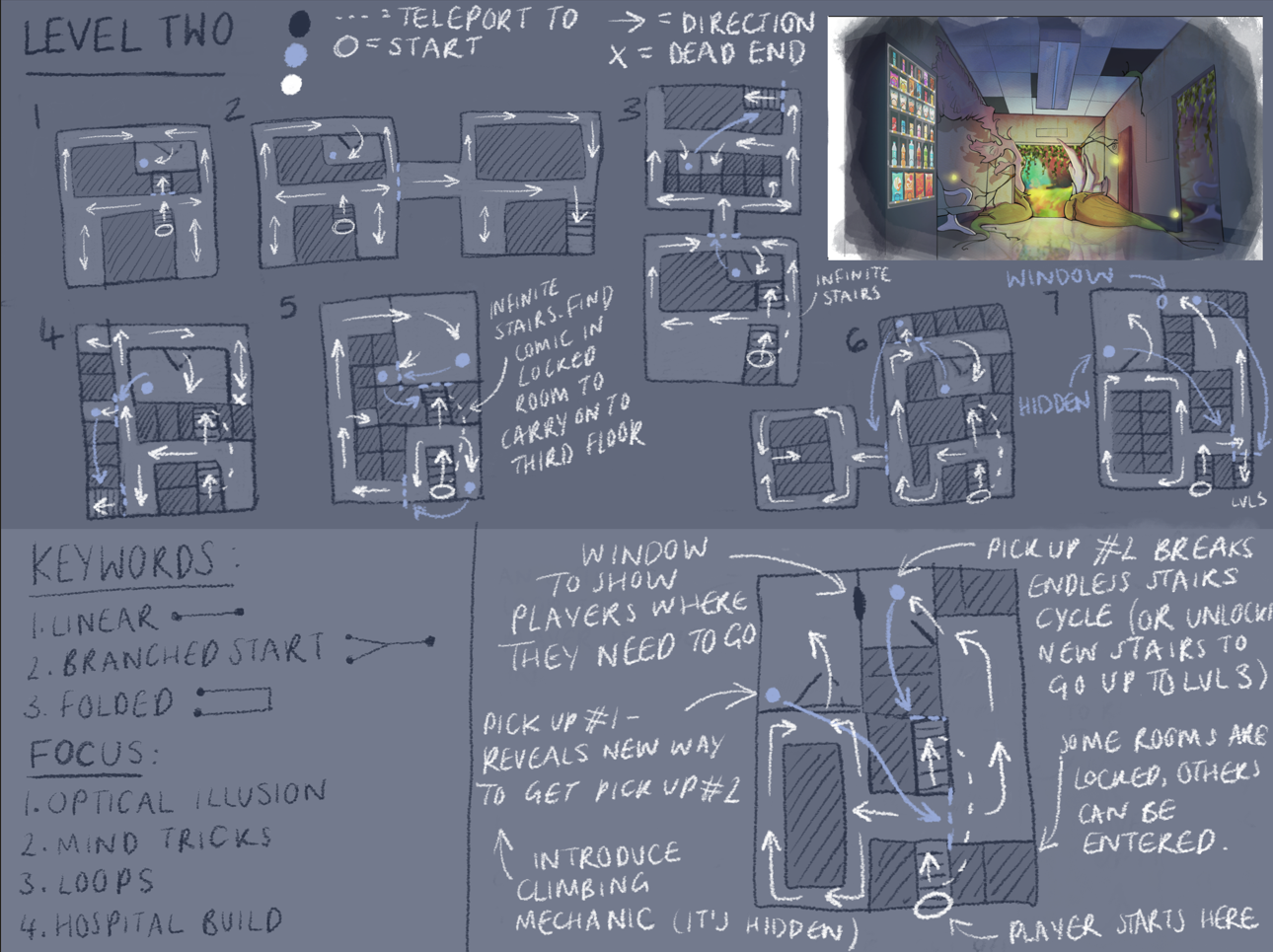
Non-Euclidean elements were central to part of the design, allowing players to initially loop endlessly through corridors until they discovered a key item which would help them advance through the level (this level design was influenced by one of the puzzles from the game Antichamber). This pickup ultimately unlocks the ability to teleport between the game’s two worlds — reality and fantasy — allowing them to progress further into the story.
The game is set in a hospital, which presented unique challenges in level design. Hospitals, with their maze-like corridors and countless rooms, can feel naturally confusing. I wanted to lean into this to create a sense of disorientation while ensuring the environment remained engaging and easy to navigate. To ensure this balance, I designed several rooms that players could explore, each containing Easter eggs and narrative fragments that revealed stories of other patients in the hospital. These details added depth to the environment, making the game come more alive, especially as there are no NPCs (we wanted the player to feel the isolation and lack of inspiration).
During development, I focused on grey boxing the level to establish a good, strong foundation for the game’s level design (of which there were three floors). Throughout the design process, I made sure playtesting was done throughout to evaluate the playability and overall balance of the level design, ensuring it provided a compelling, enjoyable experience for players. Whilst there were several areas I could add to and take forwards, with only one week to finish it, I was limited. My goal was to create an environment that encouraged exploration while subtly guiding players in the right direction through thoughtful level design.
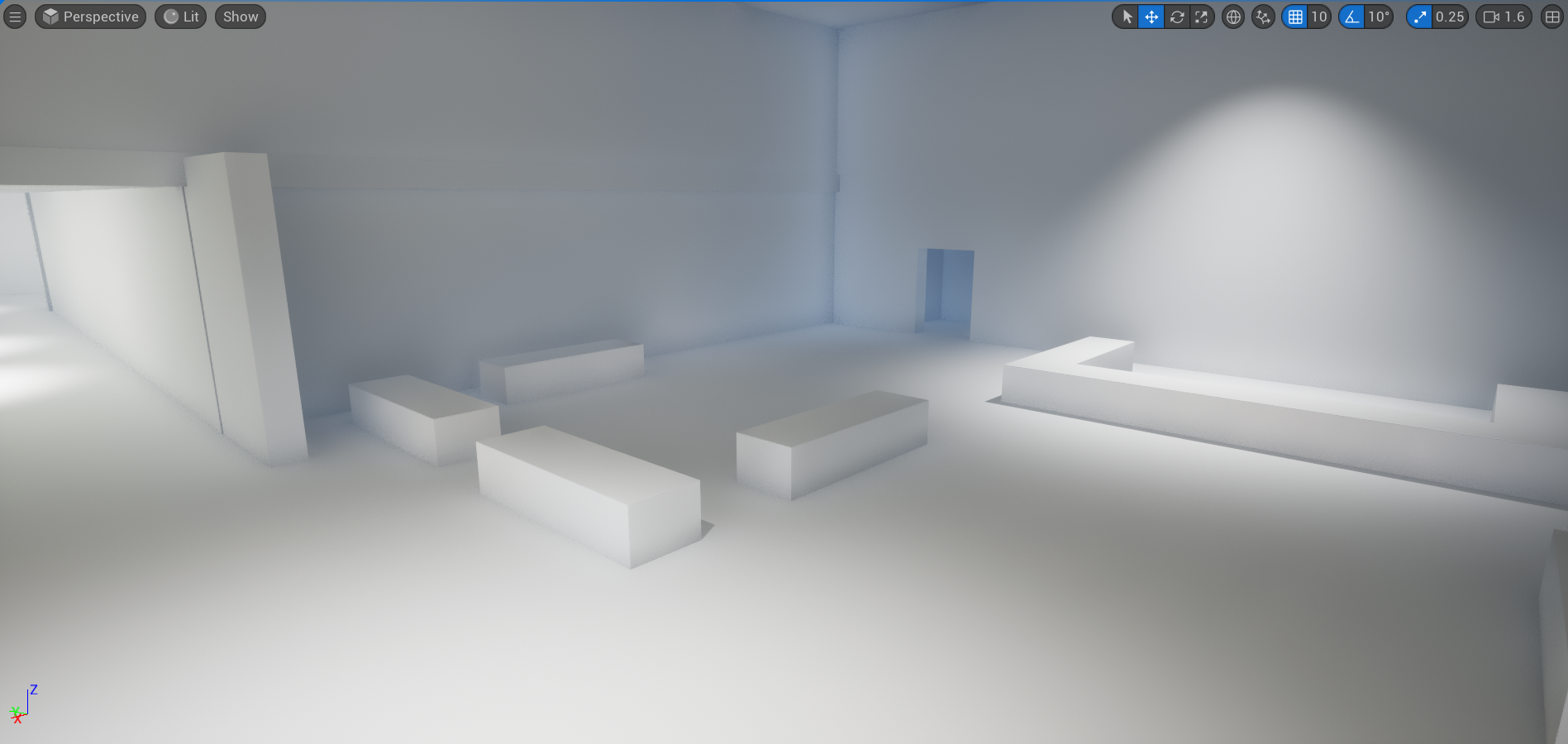
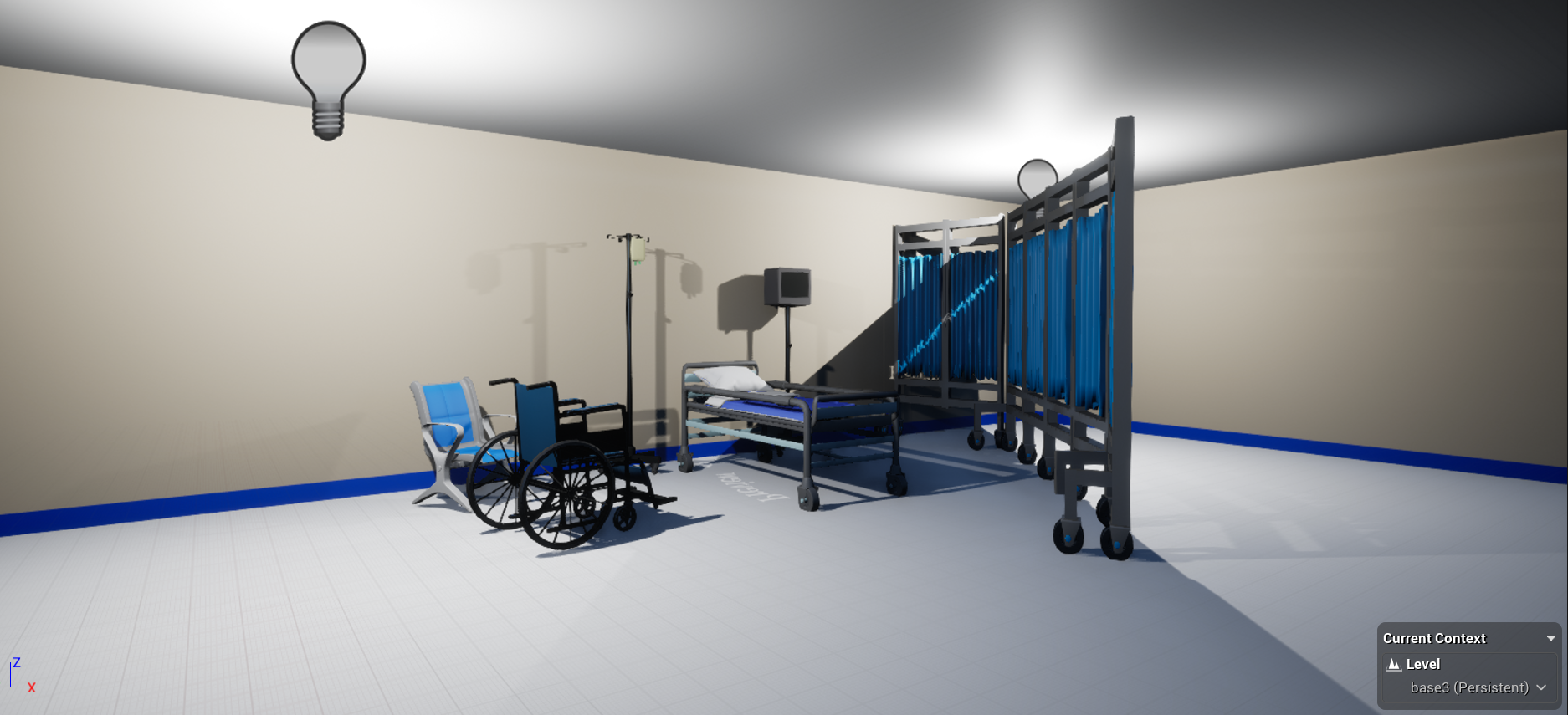
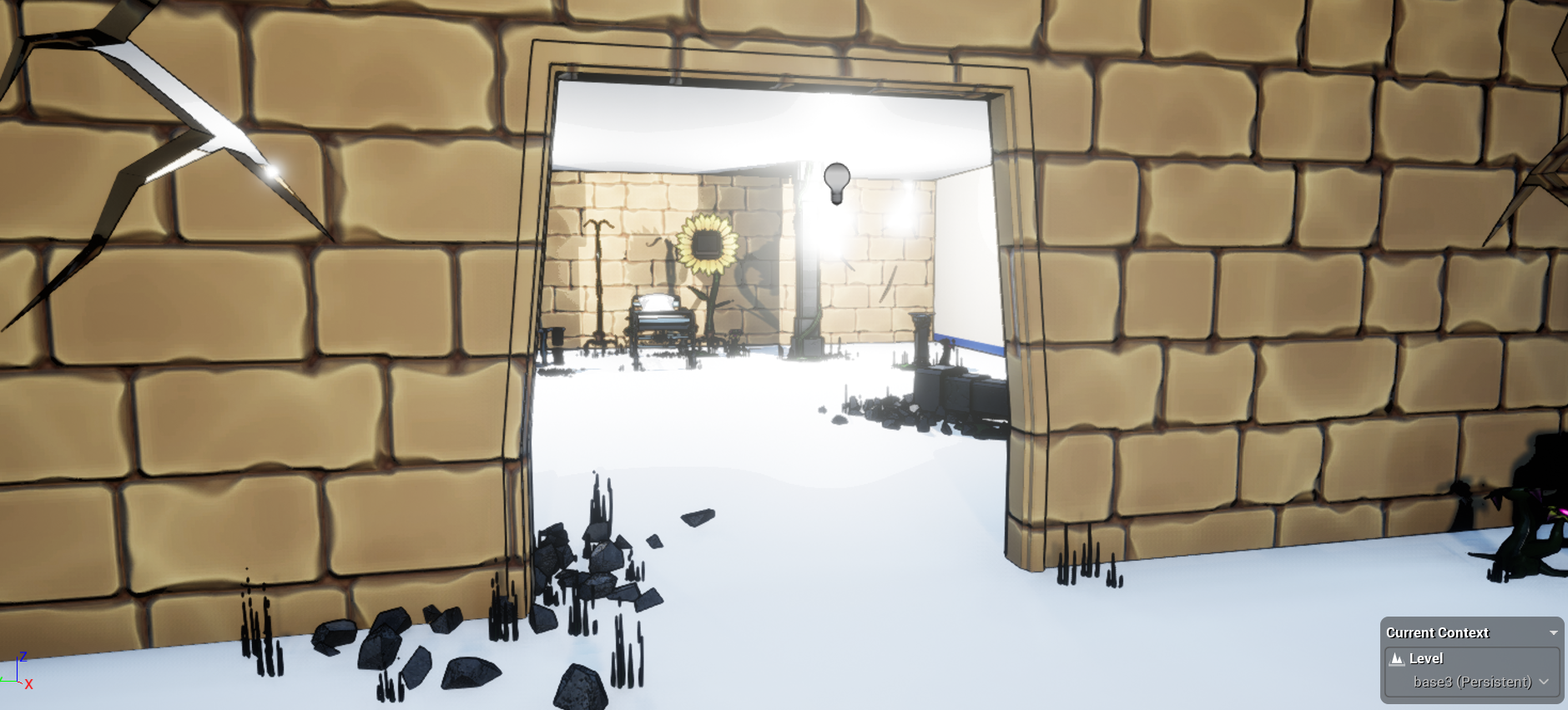
One way I helped to allow playful exploration for the players was by including rooms people could explore (as seen in the second image below). In the reality world, certain doors are partially open, signalling to players which areas are accessible when they teleport to the fantasy world. This mechanic allows players to intuitively understand where they can go, creating a sense of discovery while maintaining clarity throughout the level design. By layering this design element, I encouraged exploration — one of the game’s core themes.
Exploration ties into the narrative behind the game: the main character must rediscover her joy for writing, uncovering hidden stories within the hospital as she navigates its corridors, which ultimately allow her mind to wonder and explore metaphorically. In the initial design process, our team liked the idea of having a younger version of the main character act as a guide, similar to the Sharman in the game Papa y Yo who offers Quico, the main character, guidance. By designing the level to reward curiosity, I aimed to mirror the character’s journey of overcoming creative block, giving players a sense of accomplishment and connection to her story.


In addition to level design, I contributed to the game’s sound design, carefully selecting and layering audio elements to enhance the overall atmosphere and support the narrative. I gathered sounds from copyright free sites and went on to edit a soundtrack in Audacity, a free audio editing software. Focusing on the visuals of the level design and the narrative, allowed me to develop and craft immersive music to help set the scene and tie the gameplay, story, and world-building all together.
